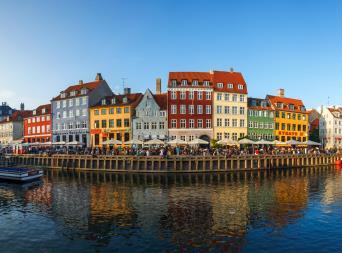Denmark’s LD Pensions said it will soon be free to shift the investment strategy behind the holiday allowances fund away from its hitherto very low-risk approach.
This is because more employers are now paying the allowances into the fund, Lønmodtagernes Feriemidler, rather than retaining the resources in their business operations, the firm said.
The Frederiksberg-based investment manager also said the latest figures from the final round of payouts from the holiday fund – which ends in about a month – are confirming its assumption that the fund will end up keeping about DKK20bn of the total DKK108bn of holiday allowances.
Dorrit Vanglo, chief executive officer of LD Pensions, said: “Until now, we have invested with very low risk – this has happened for the sake of the large payouts.”
But now that employers had paid in a significant portion of the holiday funds, LD said it had something to work with – and at the same time the age profile of the employees in the fund was becoming clearer, it said in a statement on its website.
“This means that in the near future, we will shift our investment strategy into gear,” Vanglo said.
Around 30% of the holiday funds have now been paid into the fund, with the rest remaining with employers.
But payments were being made into the fund on an ongoing basis, the firm said, as employers assessed their need to keep their holiday funds as liquidity.
Since companies have to pay interest on the funds equivalent to wage development in Denmark, keeping the money as liquidity is not a free option for them, LD said.
The pensions manager was commissioned four years ago to set up and run the holiday allowances fund, but last summer, as a COVID-19 crisis measure, the Danish government decided to grant Danes early access to three weeks’ worth of the five-weeks of frozen holiday allowances that were to constitute the fund.
The politicians later decided to allow disbursement of the remaining two weeks of allowances.
By 10 May, LD said, scheme members had requested payments of almost DKK34bn of their frozen holiday allowances.
On top of the DKK52bn paid out in the autumn, this meant a total of DKK86bn was being paid to 2.3 million employees – an amount that after tax corresponded to potential consumer spending of just over DKK51bn, according to LD.
“There is less than a month left to go in the second round of holiday funds’ early disbursement, and so far, LD Pensions can state that the payout pattern from the first disbursement round in the autumn of 2020 is being repeated in the second,” the firm said.
The average age of people deciding to leave the money in the fund was high, it said, with about a quarter of all employees aged 50-59 taking this option, along with half of all 60-plus employees.
Vanglo said that for people who did not need the money right now, there were advantages in leaving the allowances “frozen” in the fund, where they would grow over time – rather than shrink in the bank, because of negative interest rates.
“We can offer a really sensible alternative for those employees who don’t have to spend the money right now,” the CEO said.
Keeping the funds frozen also had the advantage of an attractively low level of tax on returns, LD Pensions said.
It said there was another clear financial advantage in a portion of the holiday funds remaining with employers, since these assets followed wage development and therefore constituted a secure base within the fund – and the returns also went into fund tax-free.
Alongside the holiday fund, LD Pensions also manages Lønmodtagernes Dyrtidsmidler, the non-contributory maturing pension fund it was originally established to manage in 1980.
At the end of 2020, that fund had DKK89.4bn of assets to manage.






















No comments yet